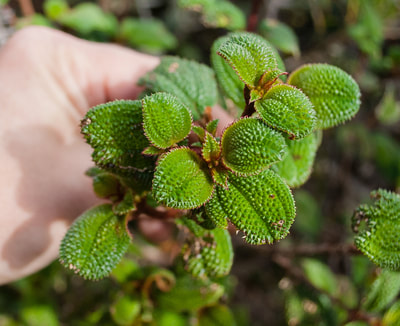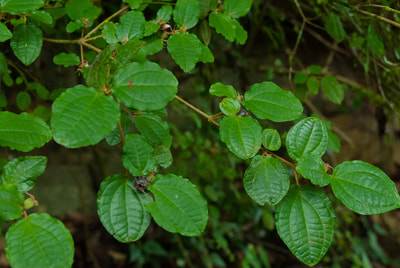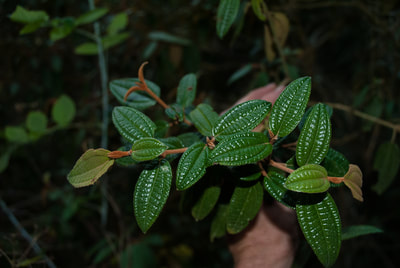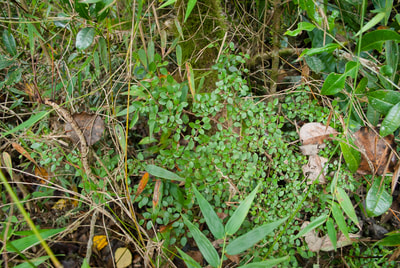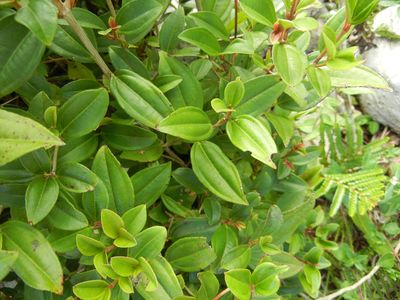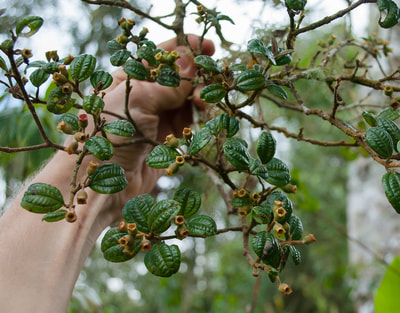Systematics of tribe Miconieae (Melastomataceae)
Tribe Miconieae is a large Neotropical clade or more than 1800 species of mostly trees and shrubs in the family Melastomataceae. The group is hyper diverse in both MesoAmerica and South America but also is very diverse in the Greater Antilles, especially high montane areas. In the lab we focus mostly on the Caribbean clade, a group of ca. 155 species still in need of much investigation. Studies have shown that this group is very morphologically heterogeneous in floral form, inflorescence type, fruit size and vegetative characters, likely more so than most major clades within the tribe. Thus, they give us an opportunity to study this variation and its evolutionary underpinnings. I have outlined a few of these clades below.
The Lima clade
The Lima clade is a group of ca. 19 species that occur in Cuba, Jamaica and Hispaniola. So named for the volcano-like modified hairs on the upper leaf surfaces, this group is part of the larger Sandpaper clade. The production of these modified hairs is widespread throughout the clade, however, it appears to be homoplasious, having evolved several times in different subclades (Majure et al. 2015). We still lack a full sampling of the group for phylogenetic studies, as numerous species are still only known from the type specimens, several of which were collected either by Charles Wright in Cuba or Erik Ekman in Haiti (Majure et al. 2017). Here is our monograph of the Lima clade for those interested: https://phytokeys.pensoft.net/article/9355/
The Calycopteris clade
The Calycopteris clade are a group of ca. 13 species and which is restricted to Cuba and Hispaniola. They can be recognized by their flattened or elongate calyx teeth and strongly 4-lobed ovaries. We have recently monographed this clade (Judd et al. 2014, Bécquer et al. 2017), however, like the Lima clade, we are missing phylogenetic data from a number of species, and species limits in the group are still not totally clear for a couple of taxa (Majure et al. 2018).
The Calycodomatia clade
This is a clade of roughly 19 species distributed from Cuba and Jamaica to Hispaniola. The monograph of this clade is currently underway (Skean, in prep.). Members of this group often have conspicuous, volcano-like acaro-domatia along the abaxial surface of their leaves, making them easy to distinguish from other members of the Sandpaper clade. New species are still being found in this group (Majure et al. 2018).
